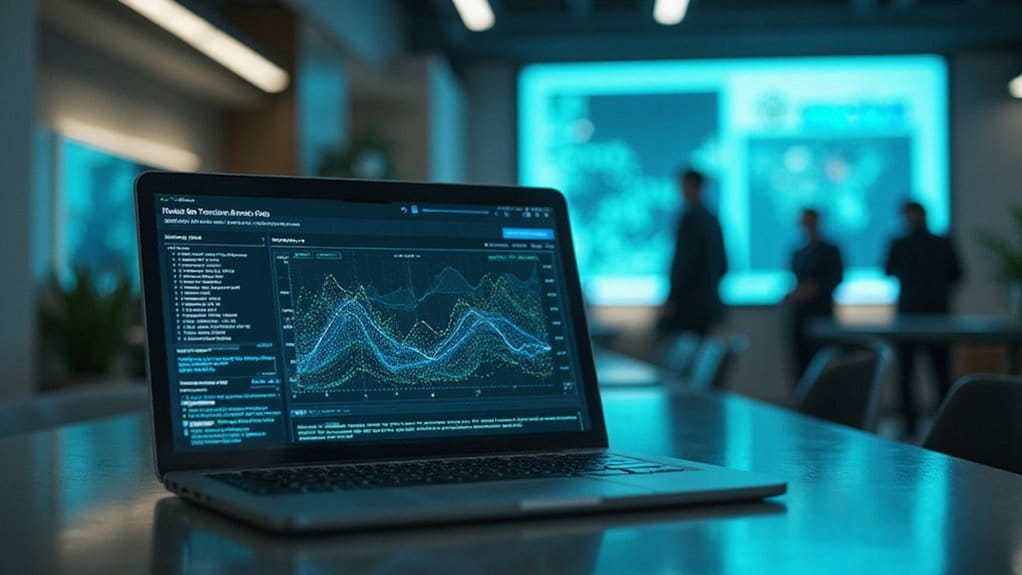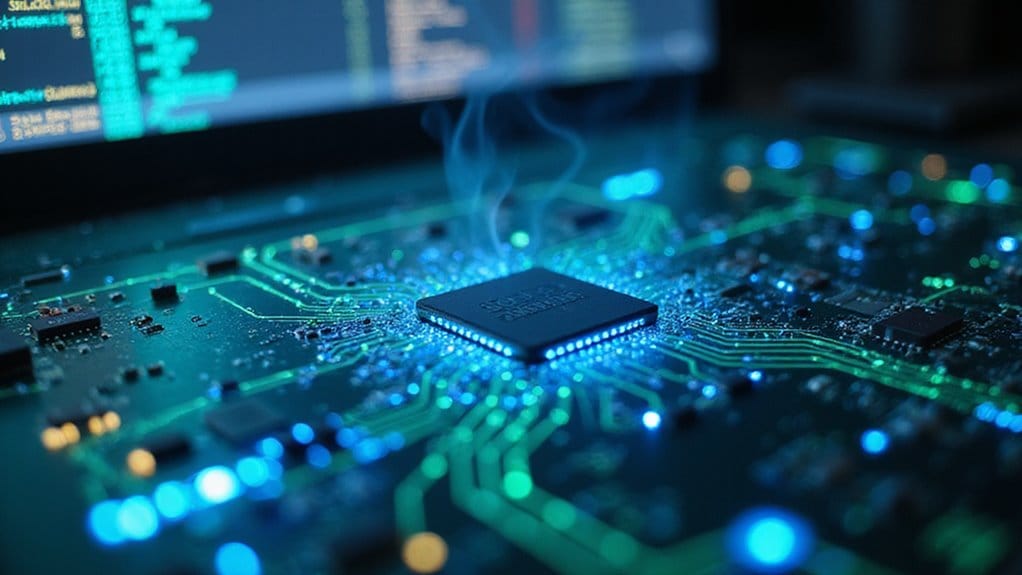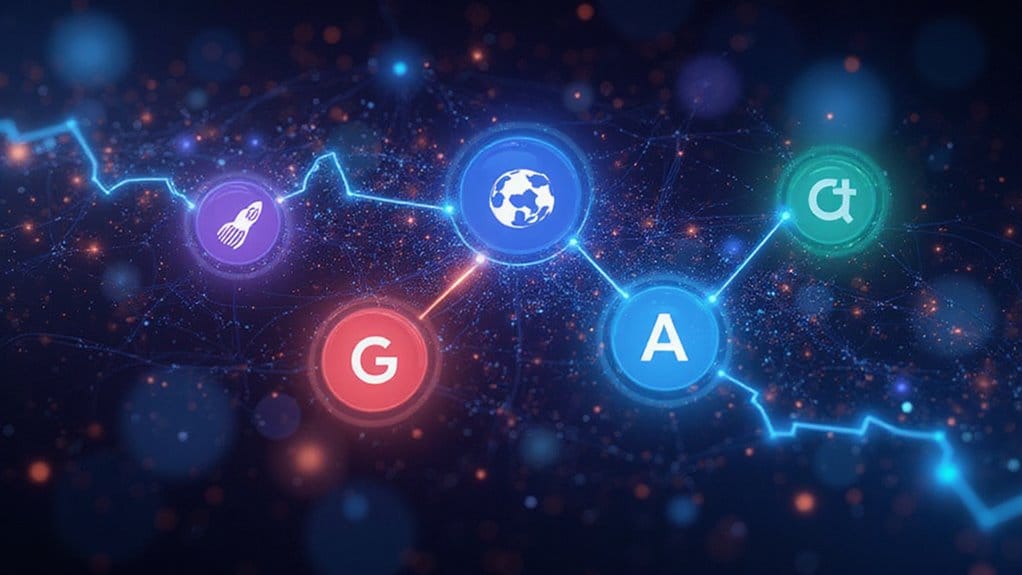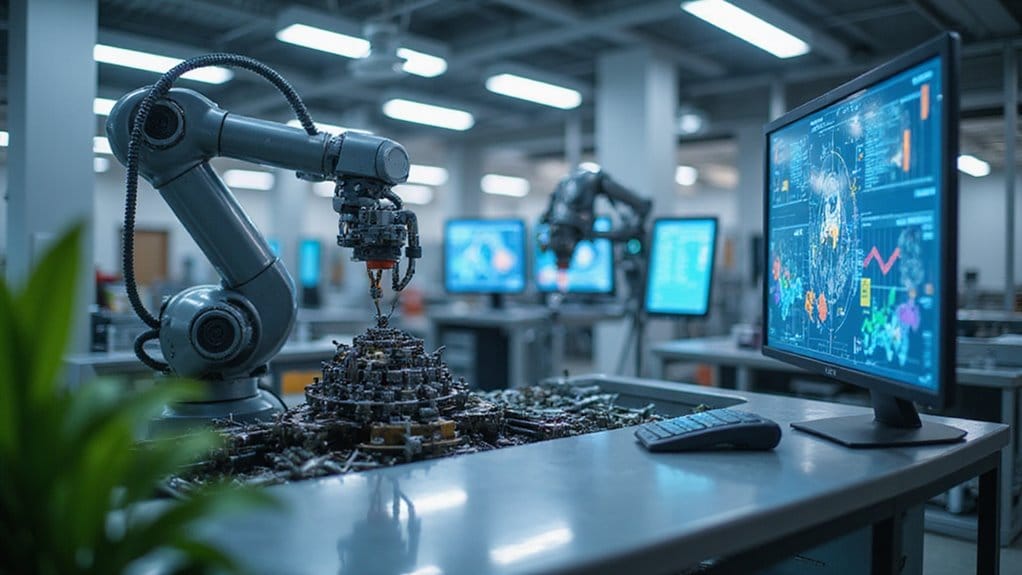AI is shaking up how banks catch fraud, and let’s face it – it’s about time! With detection rates soaring from 87-94%, these smart algorithms analyze transactions like a hawk on a mission. They spot anomalies in real-time, cutting false positives by 40-60%. That means fewer accidental fraud flags ruining your day! But watch out: ethical concerns remain. They can’t get too confident; understanding AI’s potential and limitations is the name of the game! Find out how this all works!
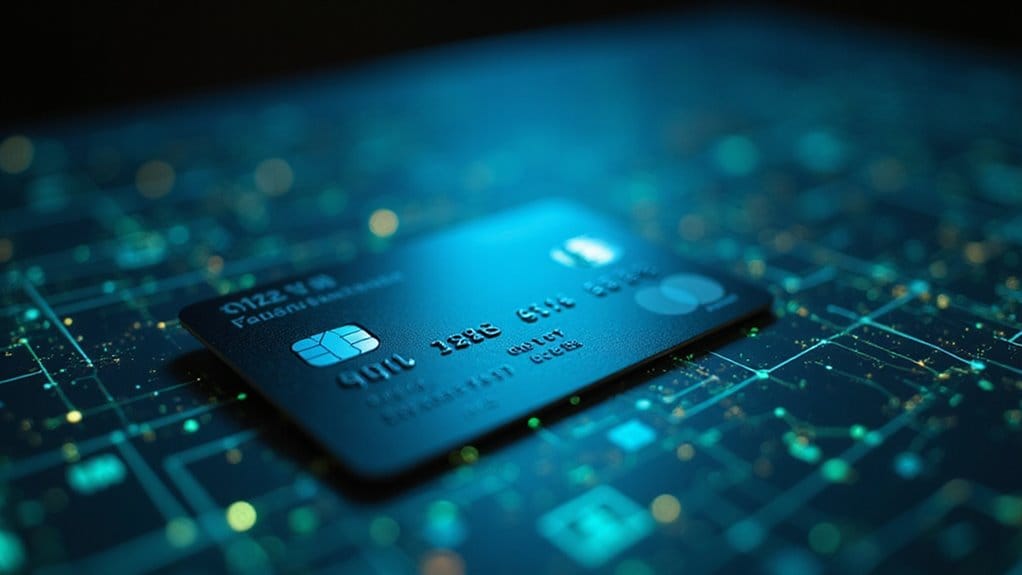
In a world where fraudsters are getting smarter, it’s vital that businesses stay one step ahead. Enter AI in fraud detection—a game changer for banks battling relentless security challenges. With detection rates soaring between 87-94%, AI algorithms are making it harder for sneaky fraudsters to slip through the cracks. Imagine this: you’re swiping your card, and AI is right there, monitoring transactions in real time, flagging any transaction anomalies that seem fishy. That’s the power of machine learning at work!
But wait, there’s more! Traditional methods of fraud detection come with a high price—false positives. Nobody wants to be wrongly accused of fraud, right? Thankfully, AI reduces these pesky false positives by 40-60%. So when your bank calls about “suspicious activity,” it’s probably not because you treated yourself to that fancy coffee again.
Now, let’s talk about the nitty-gritty. AI uses complex algorithms that self-learn from historical data, adapting over time to recognize new patterns of fraud. This isn’t just smart; it’s vital. As fraud tactics evolve, AI keeps pace, continuously improving its ability to spot potential threats before they become a reality. Moreover, integrated AI approaches have consistently outperformed standalone techniques, enhancing the overall effectiveness of fraud detection systems. With AI identifying various types of bank fraud, financial institutions can take a comprehensive approach to combatting these threats. Additionally, real-time transaction analysis allows banks to quickly respond to suspicious activities, further safeguarding customer assets.
However, this sophisticated technology isn’t without its challenges. Data privacy concerns loom large. Banks must guarantee that while they’re hunting down fraudsters, they’re not infringing on personal privacy.
And we can’t forget about algorithmic bias. If AI isn’t trained correctly, it can misjudge behaviors, leading to unfair outcomes. So, while the tech is impressive, it’s vital for banks to prioritize ethical frameworks and transparency. This isn’t just about numbers—it’s about trust.
As more than half of financial institutions embrace this technology, it’s clear AI is not just a trend; it’s the future. So, the next time you swipe your card, rest easy. AI is watching your back, working tirelessly to keep your transactions safe and sound.
Frequently Asked Questions
How Does AI Differentiate Between Genuine Transactions and Fraud?
AI differentiates between genuine transactions and fraud by analyzing transaction patterns and employing anomaly detection.
It spots odd behaviors, like unusual spending or suspicious locations—think of it as a vigilant watchdog. When transactions don’t fit the established pattern, alarms go off.
What Are the Limitations of AI in Fraud Detection?
AI in fraud detection has its quirks.
First off, data bias is a sneaky beast; it can lead to unfair outcomes. Want fairness? Demand algorithm transparency!
Remember, without diverse data, models might miss new fraud tactics. Ongoing maintenance is a must—don’t forget to retrain those systems every 6-12 months.
Ultimately, human insight is invaluable. So, collaborate with analysts to tackle those evolving fraudsters. Don’t let AI go solo!
How Does AI Impact Customer Privacy in Banking?
AI’s impact on customer privacy in banking is significant and, frankly, a bit scary.
Data security hinges on how well banks handle customer consent. Yes, they need your permission to collect data, but be aware—once it’s in their hands, things can get tricky.
Banks must use anonymization techniques to protect your info, ensuring transparency and trust.
Can AI Learn From Past Fraud Patterns Effectively?
Can AI learn from past fraud patterns effectively? Absolutely! By leveraging historical analysis and masterful pattern recognition, AI sifts through mountains of data faster than you can say “identity theft.” It identifies trends and anomalies that humans often overlook. So, don’t underestimate its capabilities! Regular updates enhance its learning, keeping you one step ahead. Just remember, a sharp AI is a bank’s best friend—don’t let outdated systems hold you back!
What Role Does Human Oversight Play in AI Fraud Detection?
Human oversight is essential in AI fraud detection. Why? Because machines lack human intuition.
Sure, AI analyzes data fast, but it can miss nuances that a human would catch. Set alert thresholds wisely—don’t let AI decide everything!
Interpret those AI alerts; they need your expertise. Remember, even the smartest AI can’t handle every scam, especially when it comes to social engineering.
